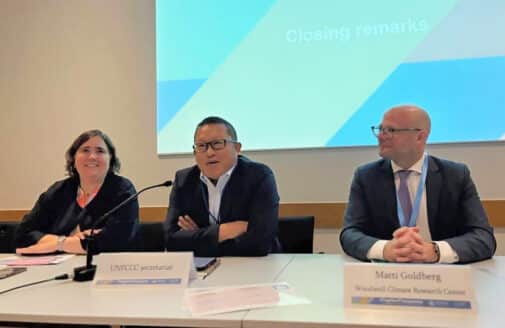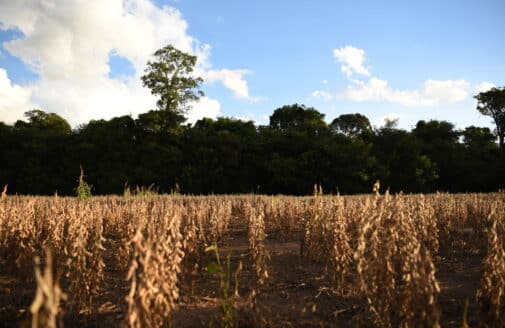Study suggests future irrigation for Brazilian agriculture could push water use to unsustainable levels

According to a recent study conducted in the tropical Xingu Basin of Mato Grosso, Brazil, the agricultural sector is the largest regional consumer of water despite a minimal amount going to irrigate cropland and pastures.
Most of the agricultural water use comes from cattle ranching, which uses over 11 times more water than the local population of Mato Grosso.
WHRC scientist Dr. Michael Coe, who was the paper’s second author, noted that agricultural water usage in the region could climb. With Brazil’s announced goal of doubling crop yields by 2030, irrigation systems will likely be employed more in the coming years.
“Ideally, there are two crops per year – soy and corn,” Coe said. “Farmers will want to guarantee the harvest despite highly variable growing seasons, so increased irrigation is something we could see occurring in the region.”
This is a concern, considering the study’s suggestion that increased use of irrigation—along with deforestation and increased cattle ranching—could push water use to unsustainable levels in the future.
The study, published by the Multidisciplinary Digital Publishing Institute and led by Ph.D candidate Michael Lathuilliere of the University of British Columbia, used observations of annual changes to water usage, deforestation, and effects of climate change to predict future levels of water usage.
Coe’s primary role in the study was to project the effects of climate change on regional water usage into 2030 and beyond. He did so along with WHRC scientist Dr. Andrea Castanho, who was the paper’s third author.
Fortunately, the goal of doubling agricultural productivity in Brazil is parallel to another: reforesting 22 million hectares of climate-proof landscapes. While it’s a lofty goal, Coe believes it is achievable.
“There’s not another tropical nation close to the position that Brazil is in with respect to monitoring and enforcing policies in land use,” Coe said. Farmers in Brazil are required to fill out permits specifying how they intend to use land. Satellite imagery allows law enforcement to ensure that land is being used as permitted.
Coe suggested that conservation of tropical rainforests in Brazil must include a dialogue with the agricultural industry in order to create meaningful progress.
“We realized when we got into this fifteen years ago that we weren’t getting where we wanted without working with agriculture – it wasn’t going to happen,” Coe said. “What we were not going to do is say [to farmers] that you can’t grow your crops.”
Agriculture is a critical source of income for the population of Mato Grosso. Over the past 20 years, the expansion of agriculture has funded infrastructure development that now supports 3 million people.
According to Coe, conservationists must account for growing agriculture, as its water use seems likely to increase.
“Telling people not to farm is a non-starter for productive conversation,” he said. “We have a goal: end deforestation. We know in Brazil that means also finding a way for agricultural production to increase. We have to do this.”







